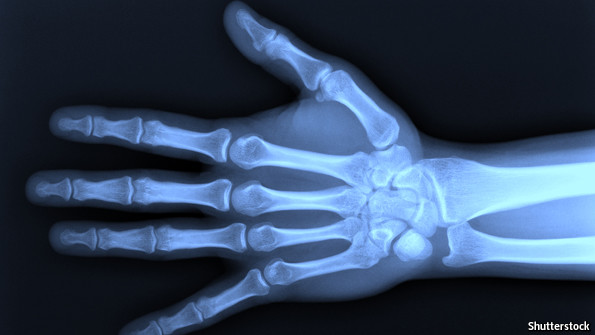By Liane Clores
I glance at the wall clock as I finish off my breakfast with the last sip of coffee. 6:14 am. Duty is about to start in about 46 minutes. I have to hurry up, I don’t want to be late for the endorsement. I fix my neatly ironed scrub suit and smock gown, pick up my things, which I prepared last night and head out the door with my game face on. Another day of saving lives is about to start.
is about to start in about 46 minutes. I have to hurry up, I don’t want to be late for the endorsement. I fix my neatly ironed scrub suit and smock gown, pick up my things, which I prepared last night and head out the door with my game face on. Another day of saving lives is about to start.
“It’s like having a taste of both heaven and hell on earth,” Carmel* tells as she describes what it is like being an ICU nurse. “You get to save lives and be of help to patients who are sick, but what’s depressing about being a nurse in the ICU is seeing a life fading from a person’s eyes from time to time,” she adds.
6:30am. I arrive just in time for the nurses’ endorsement. I warm up and whisper to myself, “I can do this” as I get ready to face anything that may happen within my 8-hour duty shift. I grab the kardex first and try to read through my assigned patient’s information. Next, I take hold of the chart and read thoroughly, asking questions now and then from the outgoing nurse-on-duty, checking every sheet on the chart. We then proceed to bedside endorsement. Icheck if the IV site is patent and is not yet infiltrated, the labels and drips of they are on time, the urine catheters if clogged up or not, machines attached to the patient if functioning well.
“You have to be meticulous though, everything can be significant. You must check everything in the chart, from orders to what medications are to be administered and what has been the status of the patient within the previous shift. You must possess good assessment skills and must never be afraid nor shy to ask questions, or else it will only result to you getting confused, making mistakes, and worse taking your patient’s life at stake,” Rachelle shares.
After all the assessment and baseline vital signs taking, I proceed to checking the stocks and supplies. Once satisfied that the stocks can last the entire shift, I take the medicine cards from the medicine rack and organize them. I plan out my activities for the shift and prioritize them according to urgency, for today is going to be a long day of turning and lifting patients, administering medications, suctioning, monitoring and catering the patient’s needs.
The ICU is where seriously sick persons are admitted and are cared for by specially trained nurses. They need a higher level of care compared to those patients admitted in wards. They should be monitored intensively and are closely monitored. Even though the ratio of patients and nurses is 1:1, some still consider it stressful being an ICU nurse. Since nurses are assigned to one patient each, each is expected to render comprehensive care to the clientele.
My patient’s BP has dropped from 180/100mmhg to 150/80mmhg. I call the resident doctor on duty to update him on the latest progress and after examining the patient, he orders to decrease the rate of the AC drip in decrements of 5 until the BP reaches 130-140/80mmhg.I decrease the rate from 10 uggts/min to 5uggts/min and recheck the BP 30 minutes later. The attending physician arrives to conduct his daily rounds and I update him regarding my observations on the patient’s current condition. I show the latest vital signs, laboratory findings and assist him as he examines the patient closely. I suggest plans of care which he acknowledges courteously. After which, I carry out the doctor’s orders and prescribe due medicines and supplies while continuing monitoring the patient closely making sure that the patient remains stable.
ICU nurses are trained nurses who are assigned to critically ill patients. Since these patients have unique needs, nurses must be equipped with proper training to handle them more appropriately such as Intravenous Therapy, Basic Life Support and ACLS trainings. They must have critical thinking skills and make snappy decisions. In the battle of life and death, they must come prepared and have a knowing on what to do since by working every day, they know that they are making life and death decisions and one wrong move can make matters worse.
I step out of the unit feeling tired and relieved. My 8-hour shift is now over as I turned my patient over the next nurse-on-duty. I feel fulfilled to know that today, I saved another life. It really is exhausting being a nurse and even the salary isn’t enough compared to all the sacrifices you have made in a day of duty. But sometimes, small things can make a big difference, like for us, nurses, just hearing a simple “Thank You” from either patients or their folks is enough to wipe the stress away.
Source: NursingCrib


 The Healing Power of Dogs
The Healing Power of Dogs





 In a recent editorial in The New York Times, Theresa Brown wrote about how clinical hierarchies and the impact of conflict between nurses and physicians can be deadly for a patient. She said "when doctors and nurses don't get along, it's the patient who suffers."
In a recent editorial in The New York Times, Theresa Brown wrote about how clinical hierarchies and the impact of conflict between nurses and physicians can be deadly for a patient. She said "when doctors and nurses don't get along, it's the patient who suffers."




 By Christina Orlovsky
By Christina Orlovsky